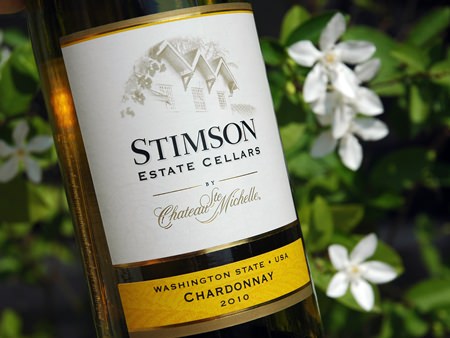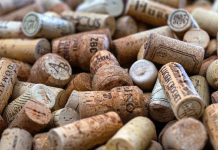Ask any European or Australian to name the American states where wine is produced, and the chances are that California will top the list. And it’s true that California makes 89 percent of all American wines, although you might be surprised to know that wine – of a sort – is produced in all fifty states. Old world wine drinkers don’t often associate wine with the State of Washington. It seems too far north for one thing, yet many of the vineyards are on almost exactly the same latitude as those of Bordeaux and Southern Burgundy. Washington can boast to being among the top three wine-producing states in North America, though it contributes only about 3.25 percent to the total. In case you’re wondering, the other top State is New York, which in 2012 produced slightly more wine than Washington.
At the last count, Washington State had over 43,000 acres of vineyards and well over seven hundred wineries exporting to over forty countries world-wide. And while we’re on numbers, I bet you didn’t know that there are over eighty grape varieties grown there. You’ll find most of our old friends, together with dozens of obscure things like Abouriou, Black Cornichon, Blauer Portugieser, Clevner Mariafeld, Csaba and Ehrenfelser and that’s only going as far as the letter “E”.

Nearly all the wine grape production (99.9% to be painfully exact) is on the Eastern side of the Cascade Mountains which shield the vineyards from the damp Pacific climate. The enormous Columbia Valley AVA (“American Viticultural Area”) was established in 1984 and covers more than a third of the state. And by the way, if you’re a bit hazy about AVAs, they are simply designated wine-growing areas. There are over two hundred of them in the USA, with twelve in the State of Washington.
The first Washingtonians to make wine were German and Italian immigrants who planted grapes there during the 1860s and 1870s. But it wasn’t until the middle of the 20th century that the wine industry got into its stride. In recent years, there’s been an explosion in the number of wineries. In 1999 for example, Washington could boast the amazing statistic of opening a new winery every thirteen days. Mind you, some of the wineries, especially those on the western side of the Cascade Mountains are pretty small outfits – sometimes not much more than a one-man show.
Stimson Estate Cellars Chardonnay 2010 (white) Washington, USA (Bt. 442 @ Villa)
Stimson Estate Cellars is owned and operated by Château Ste Michelle, Washington State’s oldest and most acclaimed winery. Founded in 1934, it successfully combines traditional winemaking with modern New World techniques and it’s one of the few wineries that strictly separate the vinification of white and red wines. The white wines are produced in Woodinville which is also the headquarters of the company, fifteen miles northeast of Seattle.
Columbia Valley’s warm, sunny days and cool nights during the growing season create ideal conditions for producing grapes with intense aromas and flavors. This attractive pale gold wine has a creamy aroma of pineapple, melon and pear. There are hints of honeyed caramel and a faint tang of citrus too. The mouth-feel is soft and seductive, dry and medium-bodied with a dash of crisp acidity that gives the wine a touch of lightness. With tropical fruits and citrus on the palate, there’s also a very long and dry finish on which you might just pick up a hint of oakiness. This is an excellent and superbly balanced Chardonnay and because the northern latitude, it’s rather more elegant than some of its rich and powerful Chilean cousins. This is a wine to sniff and savour and even at 13.5% alcohol content, I’d be perfectly happy to enjoy this on its own. Even so, it would make a terrific partner for something like grilled chicken with lemongrass.
Two Vines Merlot-Cabernet 2009 (red), Washington, USA (Bt. 549 @ Villa)
This wine is made by Columbia Crest where the Head Wine-Maker is Juan Muñoz-Oca. “Two Vines winemaking starts in the vineyard,” he writes. “We have the perfect climate for growing grapes and our trellising methods help to create wines that are enjoyable and approachable.” The name Two Vines actually refers to the method of trellising which positions grape clusters for optimum sun exposure resulting in wines with richer fruit flavours and brighter colours. Because Merlot is the first grape shown in the name, it’s the dominant grape and accounts for well over half of the blend. There’s also a large dollop of Cabernet Franc with a relatively small proportion (about 2 percent) of Cabernet Sauvignon. Cabernet Franc is one of the world’s major black grape varieties even though it’s eclipsed in importance by Cabernet Sauvignon. It’s nearly always blended, especially in the Bordeaux region of France and it adds softness and finesse to the blend.
This ruby-red wine has a seductive, sweet and slightly jammy aroma of blackberry and raspberry with a touch of black cherry, delicate spice and vanilla. The wine is dry, but not totally so and it has a very smooth and supple mouth-feel. There’s also a slight tang of acidity which gives it a bit of lift and there’s a very long, smooth finish. With plenty of generous fruit, you find that there’s hardly any tannin on the palate and it only comes through as a hint during the after-taste. I’d say that it’s a well-balanced wine as far as it goes, but being a lover of French wines I prefer something with a bit more backbone and character. It’s made in a rather commercial style, which seems to suggest that it’s aimed at the popular market. I am sure that thousands of people will enjoy this medium-bodied, easy-drinker and if you like soft, fruity and undemanding reds, you might find this wine is exactly to your taste. It comes at 13.5% alcohol content and will be at its best around 13-15° C which is slightly cool, rather than cold. If you drink it at a higher temperature, the wine will seem flabby and dull, a description that could be equally applied to a few of the chaps down at the local watering-hole.




